Talk Overview
In this lecture about fluorescent probes, Timothy Mitchison describes the chemical properties of organic dyes and quantum dots (Q dots) that make them fluoresce and how their fluorescence wavelength is tuned. It also describes how dyes can be attached to proteins, photobleaching, and other dyes that bind DNA (Hoechst) or organelles (mitotracker, lysotracker).
Questions
- True or False: A larger extended orbital of a fluorescent dye will result in a bluer shift of fluorescence.
- Which of the following is true of fluorescence dyes?
- A more flexible dye structure will result in brighter fluorescence
- Dyes with a similar electron donor and acceptor at opposite ends of the molecule reduces quenching and creates a smaller stokes shift
- Shorter wavelength fluorophores tend to have higher extinction coefficients
- Addition of sulfonate groups to a fluorophore makes them more membrane-soluble
- Which of the following is the best answer for Qdots compared to fluorescent dyes
- Qdots are smaller in size and brighter
- Labeling a protein with a single Qdot is significantly easier than with fluorescent dyes.
- The fluorescent emission of Qdots can be easily tuned by varying its diameter
- Qdots tend to photobleach more than a good fluorescent dye
- An excited fluorophore can pass energy to molecular oxygen to produce which two damaging reactive species?
- The technique CALI stands for ______________________ .
- What are the two most common amino acids used for covalently attaching fluorophores in proteins? Which one is the most common?
- Name a common reactive group for labeling lysine residues? Which pH is most suitable for labeling- pH 6 or pH 8?
- SNAP, HALO and FLaSH are genetically encoded tags for covalent reaction with a fluorescent dye. Which is the smallest?
Answers
View AnswersSpeaker Bio
Tim Mitchison
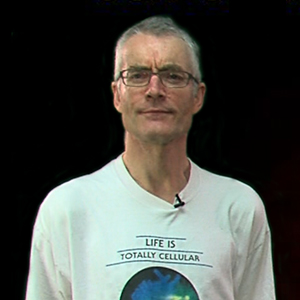
Tim Mitchison completed his undergraduate degree in biochemisty at Oxford University before moving to the University of California, San Francisco to do his PhD with Marc Kirschner. After a brief post-doc at National Institute for Medical Research in London, Mitchison returned to UCSF as an assistant professor in 1988. In the late 1990s, he moved… Continue Reading
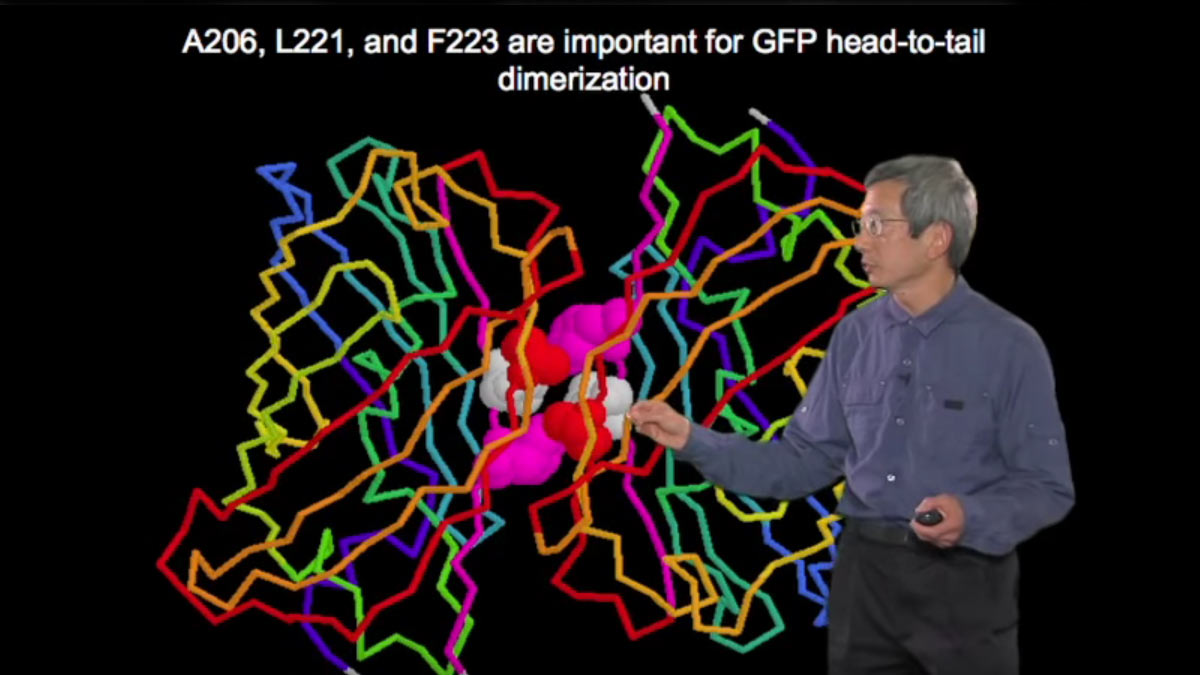
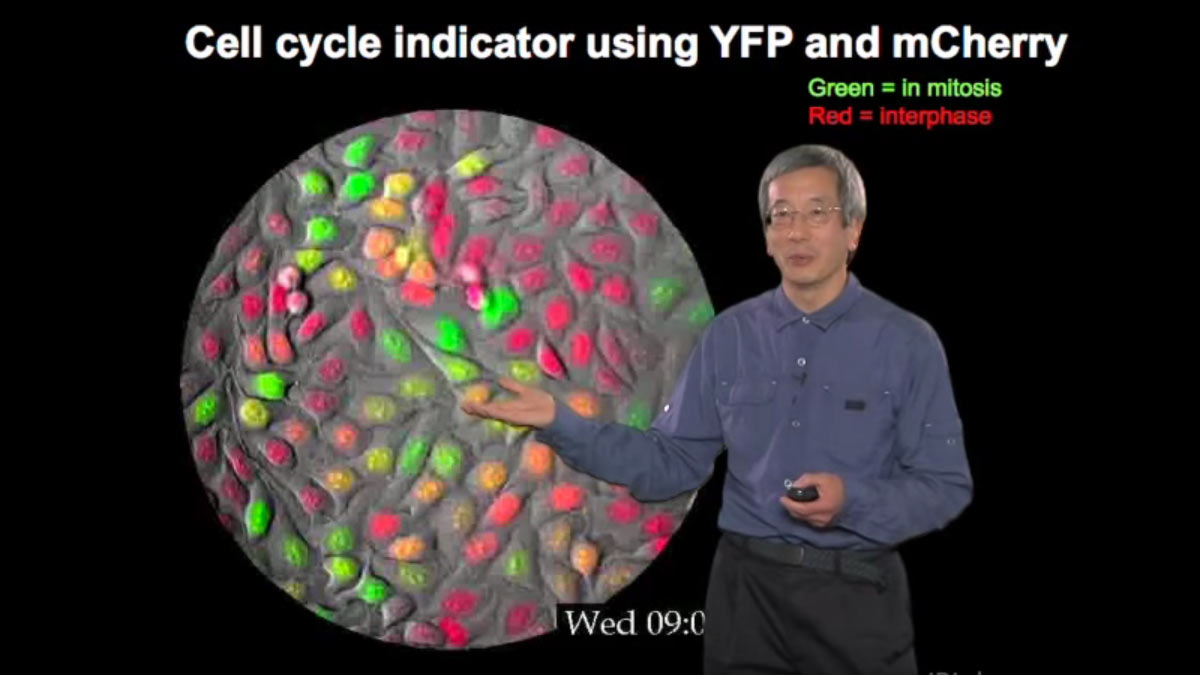
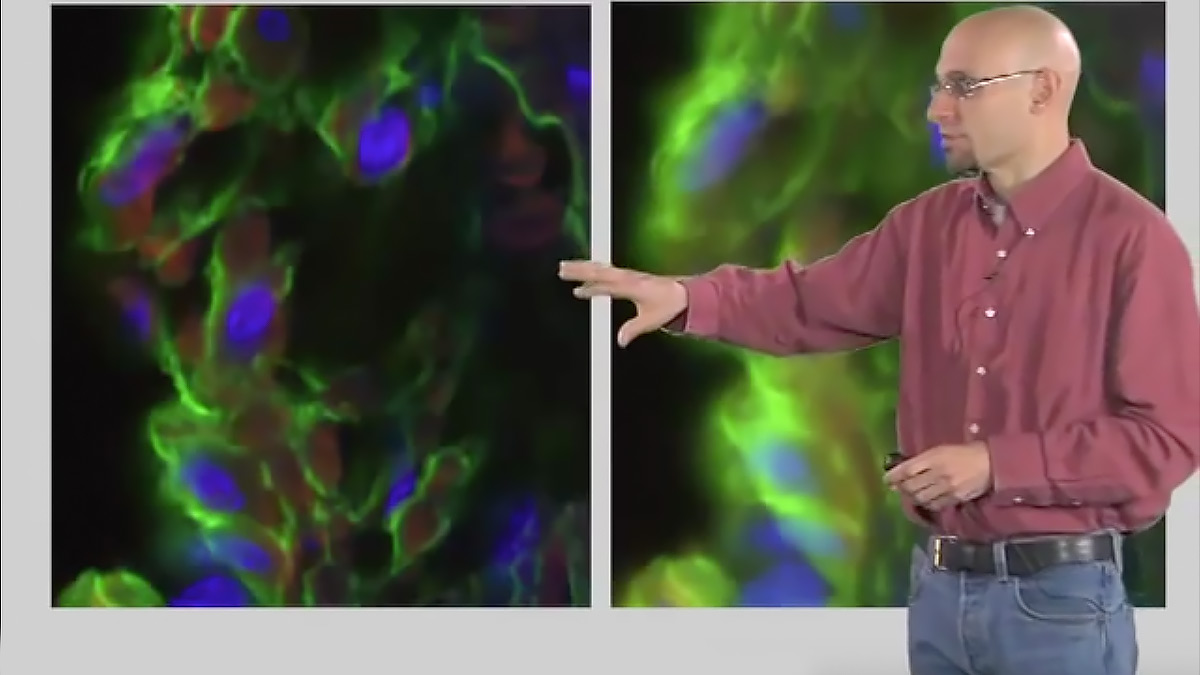
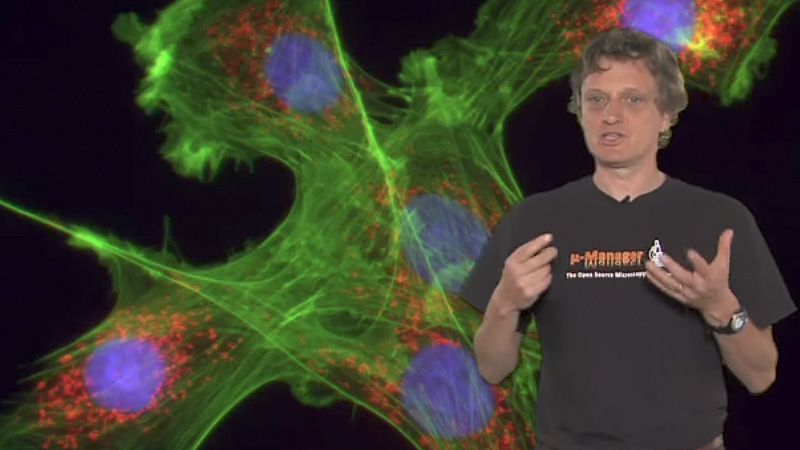





Leave a Reply